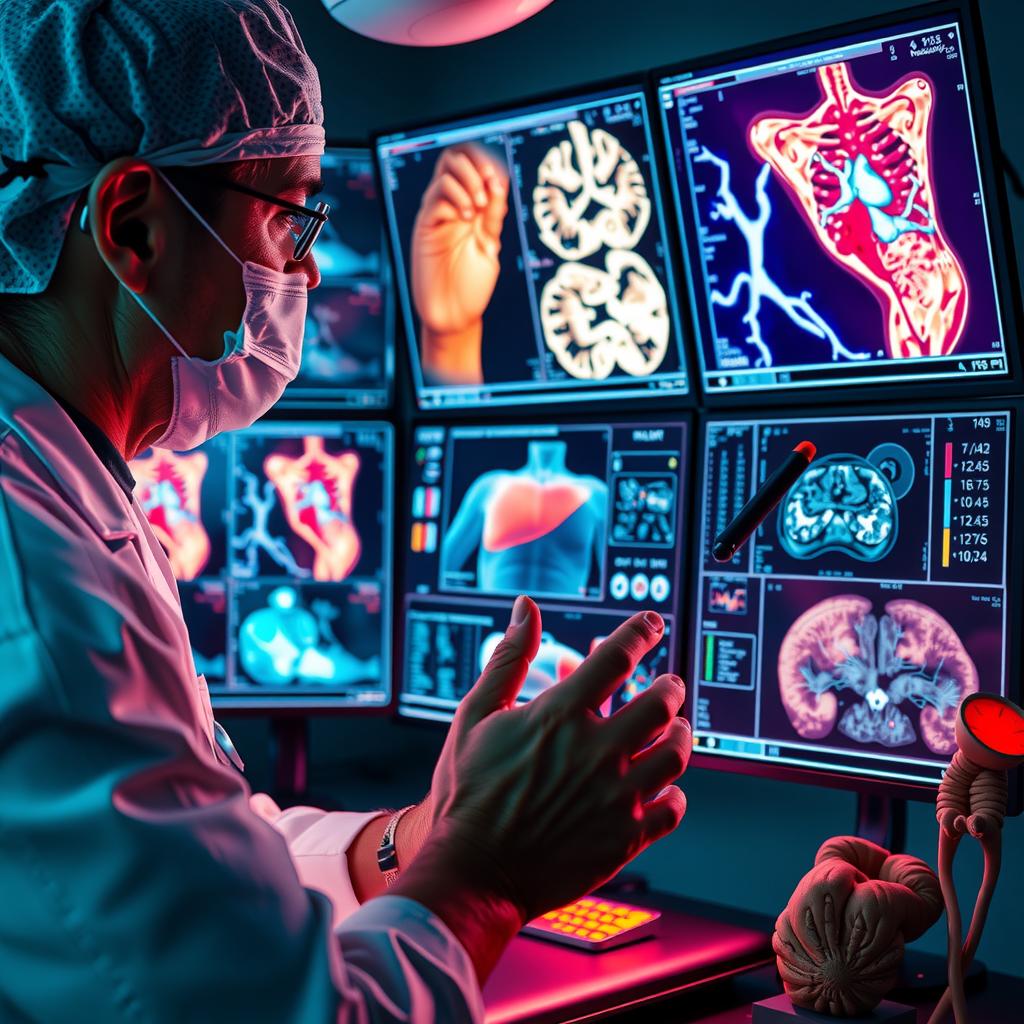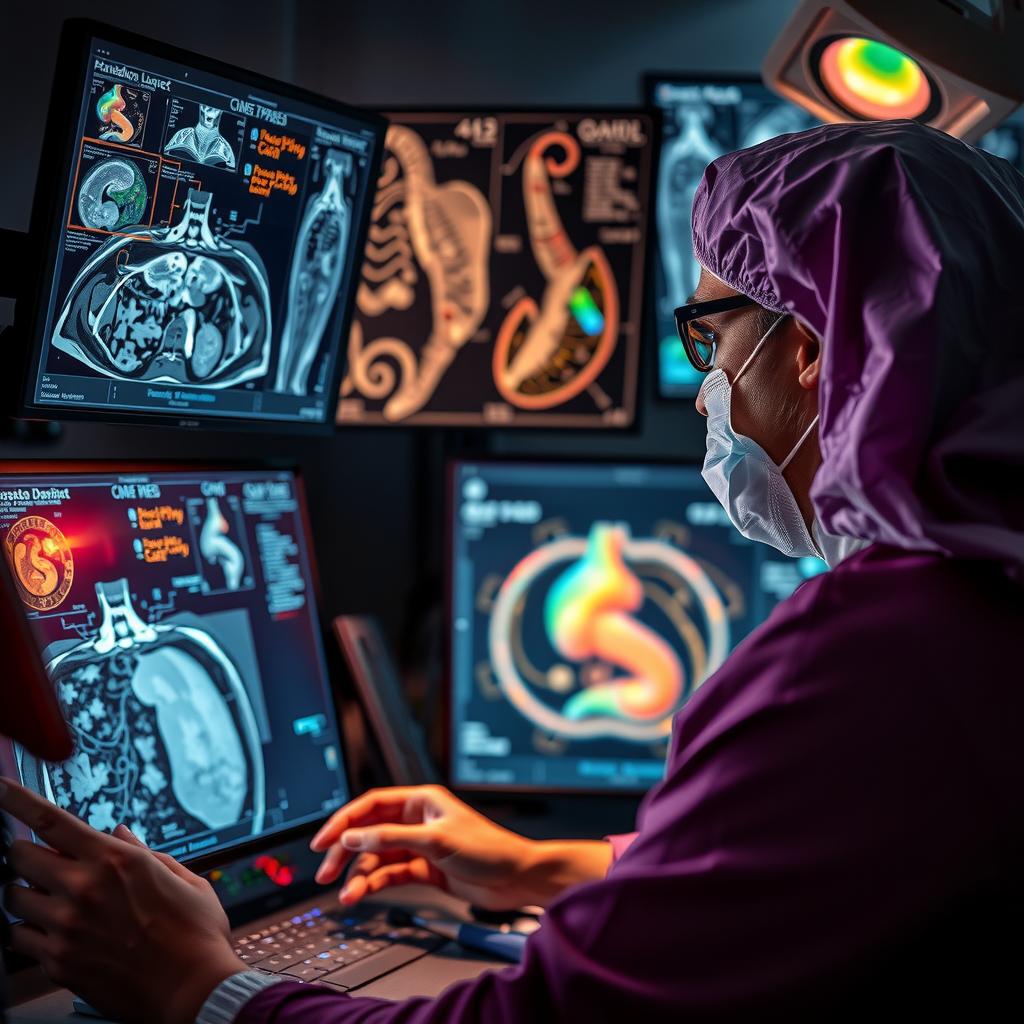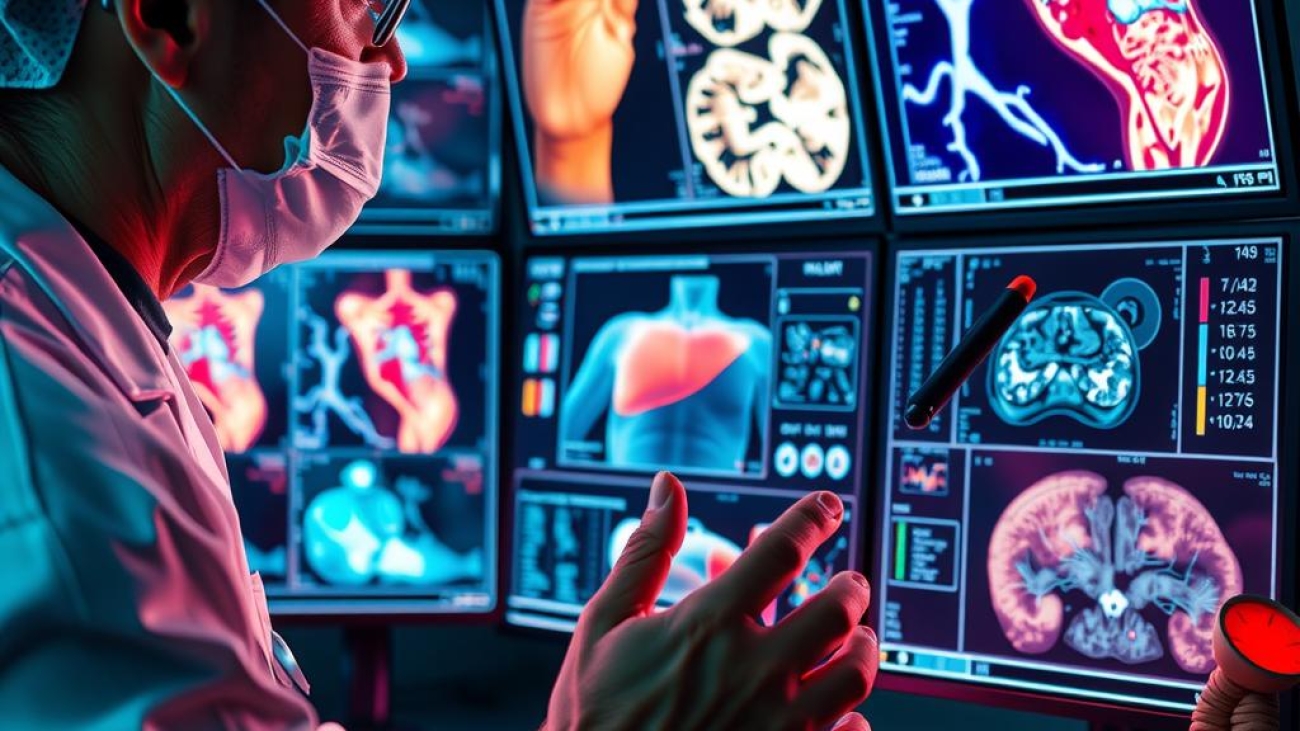In the rapidly evolving field of healthcare, the ability to accurately classify medical images can significantly impact patient outcomes and treatment efficacy. Yet, a fundamental question arises: how can deep learning methods be optimized to enhance classification accuracy in this critical domain? The answer lies within the realm of activation functions, which serve as pivotal components in neural networks that dictate how data is transformed through layers. As researchers delve deeper into the intricacies of medical image classification, they uncover that fine-tuning these activation functions not only improves performance but also plays a vital role in ensuring reliable results.
The effectiveness of any deep learning model hinges on its architecture, where different types of activation functions govern the flow and transformation of information. With advancements in image processing techniques, it becomes increasingly important to explore various optimization techniques alongside traditional methods. By strategically selecting and adapting activation functions tailored for specific medical imaging tasks, practitioners can achieve remarkable improvements in their models’ predictive capabilities. This article aims to dissect these strategies while illustrating their significance within contemporary healthcare applications.
Moreover, understanding which activation function yields superior performance for particular datasets or imaging modalities could mean the difference between misdiagnosis and timely intervention. Thus, readers are invited on an exploratory journey through innovative approaches toward optimizing activation functions specifically designed for medical contexts—transforming standard neural network architectures into robust classifiers capable of deciphering complex patterns inherent within medical imagery.
As we navigate this intricate landscape together, it will become clear that leveraging insights from recent research not only enhances classification accuracy but also promises profound implications for patient care. The following sections will delve into emerging trends and methodologies surrounding this vital aspect of artificial intelligence in medicine—allowing one to grasp both theoretical foundations and practical applications essential for future advancements in medical image analysis. So, let’s embark on this exploration into optimizing activation functions—a step forward towards unlocking untapped potential within the realm of healthcare technology.

Key Insights:
-
Title of Insight: The Impact of Activation Functions on Classification Performance
The selection and optimization of activation functions play a pivotal role in the realm of medical image classification. Different deep learning methods deploy various activation functions, such as sigmoid or ReLU, each possessing distinct characteristics that can influence model training dynamics. Understanding how these functionalities directly affect classification accuracy is crucial for practitioners aiming to enhance their diagnostic capabilities through refined workflows. -
Title of Insight: Optimization Techniques for Enhanced Neural Network Training
Optimizing activation functions involves employing advanced techniques that can significantly improve the performance of neural networks within healthcare applications. By exploring different strategies for fine-tuning these functions, researchers can observe substantial improvements in image processing tasks. This practical guidance empowers both seasoned professionals and newcomers to maximize their models’ potential in accurately classifying medical images. -
Title of Insight: Practical Applications in Healthcare Diagnostics
The implications of optimized activation functions extend beyond theoretical discussions; they offer tangible benefits to those involved in healthcare technology innovations. As clinicians and researchers refine their approaches towards integrating effective activation mechanisms into neural networks, they stand to elevate the precision with which medical images are classified. This progression not only enhances individual patient outcomes but also drives overall advancements within the field, making it a critical area for ongoing exploration and development.

Understanding Activation Functions in Deep Learning
The Crucial Role of Activation Functions in Healthcare Image Analysis
Activation functions serve as critical components within deep learning models, particularly when applied to medical image classification. These mathematical equations determine whether a neuron should be activated or not based on the weighted sum of its inputs. In healthcare applications, where precision is paramount, the choice and design of activation functions can significantly impact classification accuracy and overall model performance. For instance, nonlinear activation functions such as ReLU (Rectified Linear Unit) and its variants have gained favor due to their ability to mitigate issues like vanishing gradients that often plague traditional linear approaches. By enabling neural networks to learn complex representations from high-dimensional data—such as MRI scans or CT images—these activation functions enhance the model’s capacity for accurate diagnosis and treatment outcomes.
Moreover, selecting appropriate optimization techniques plays an equally pivotal role in enhancing the effectiveness of these activation functions during training phases. Techniques like Adam optimizer adaptively adjust learning rates during training based on first-order moments of gradients, which helps stabilize convergence—a necessity when processing voluminous medical datasets with substantial variability. Studies indicate that integrating sophisticated activation function architectures alongside advanced optimization strategies results in marked improvements in classification metrics across various medical imaging tasks (Zhang et al., 2020). Thus, understanding how these elements interact becomes essential for researchers aiming for breakthroughs in healthcare applications.
Enhancing Classification Accuracy Through Optimized Neural Networks
Leveraging Advanced Architectures for Superior Performance
The integration of optimized neural network architectures with robust activation functions has transformed medical image classification methodologies significantly. One notable advancement is the emergence of convolutional neural networks (CNNs), which have shown remarkable efficacy in interpreting intricate patterns inherent within medical images. CNNs utilize layered structures where each layer applies specific filters followed by non-linear transformations through chosen activation functions; this hierarchical approach enables deep learning models to capture increasingly abstract features at each level effectively. Consequently, incorporating well-designed activations such as ELU (Exponential Linear Unit) or Leaky ReLU enhances gradient flow across layers while maintaining computational efficiency—a crucial aspect given resource constraints often faced within healthcare settings.
Furthermore, it’s imperative that practitioners recognize how varying configurations influence performance improvement metrics beyond mere accuracy measures; they must also consider sensitivity and specificity—particularly vital when diagnosing rare diseases using imbalanced datasets prevalent in clinical environments. Empirical studies demonstrate that utilizing diverse combinations of activations leads to notable advancements not only regarding raw predictive capabilities but also resilience against overfitting scenarios common with small sample sizes typical within certain specialized domains (Wang et al., 2021). Therefore, thorough experimentation around different functional paradigms remains necessary for maximizing both interpretability and reliability across real-world clinical deployments.
Future Directions: Bridging Gaps Between Research and Practice
Addressing Challenges Through Continued Innovation
As deep learning continues reshaping diagnostic frameworks within healthcare systems globally, addressing potential limitations surrounding current implementations becomes crucially important moving forward into future research endeavors focusing on effective deployment strategies leveraging novel activation function designs tailored specifically towards medical image analysis challenges encountered regularly by clinicians today remains indispensable too.. Innovations such as attention mechanisms combined with adaptive pooling layers promise enhanced feature extraction capabilities while concurrently reducing computational burdens associated without sacrificing fidelity during inference stages further improving accessibility amongst practitioners working under tight schedules reliant upon timely decision-making processes influenced heavily by available resources dedicated toward quality assurance efforts preemptively identifying discrepancies early ensures better patient outcomes overall leading ultimately towards increased trust placed upon automated systems deployed throughout various facilities worldwide aimed enhancing efficiencies wherever possible despite increasing complexities involved managing diverse populations requiring bespoke solutions capable delivering optimal care standards maintained consistently regardless operational contexts encountered day-to-day basis underscoring significance behind sustained investments R&D initiatives driving developments field continuously advancing landscapes unlocking new horizons possibilities transforming lives positively impacting communities served everywhere relentlessly pursuing excellence every step way.
Understanding Activation Functions in Neural Networks
The Role of Activation Function Optimization in Enhancing Classifier Performance
Activation functions are pivotal to the performance of neural networks, particularly when applied to complex tasks such as medical image classification. By introducing non-linearity into the model, activation functions enable deep learning methods to learn intricate patterns within data sets. However, the choice and optimization of these functions significantly impact the overall efficacy of neural networks. Various optimization techniques have emerged that enhance activation functions, aiming to improve classification accuracy and streamline performance across different applications. For instance, advanced approaches like Leaky ReLU or Parametric ReLU (PReLU) counteract issues related to dying neurons prevalent in traditional Rectified Linear Units (ReLU). These optimizations not only mitigate limitations but also facilitate deeper architectures by ensuring gradient flow during backpropagation.
Furthermore, optimizing activation functions can lead to substantial improvements in healthcare applications where precision is crucial. In medical imaging tasks such as tumor detection or organ segmentation through image processing, a well-optimized network can yield better outcomes by accurately capturing relevant features while minimizing false positives and negatives. Techniques like batch normalization combined with specific activations help stabilize learning rates and promote faster convergence all while enhancing robustness against overfitting—a challenge often encountered with deep neural networks deployed for real-world scenarios.
Exploring Advanced Techniques for Optimizing Activation Functions
Impacts on Deep Learning Models Across Domains
With an ever-evolving landscape of deep learning methods aimed at refining model architectures for various domains, continual exploration into optimizing activation functions remains essential. Each technique offers unique benefits tailored toward improving computational efficiency and effectiveness across diverse applications including but not limited to healthcare sectors relying heavily on machine learning models for decision-making processes based on large-scale data analysis.
For example, Swish—an innovative function proposed by researchers—demonstrates superior characteristics compared to traditional options; it provides smoother gradients which enhance training dynamics thereby leading towards improved performance improvement metrics universally acknowledged within academic realms and industry practices alike. Adopted widely due its favorable traits in conjunction with other enhancements like dropout layers or residual connections enhances generalization capabilities thus proving beneficial especially when handling high-dimensional datasets typical within medical imaging contexts.
Moreover, understanding how these optimized activations interact with algorithmic parameters allows practitioners greater control over their models’ behaviors under various conditions thus leading toward more reliable predictions critical within sensitive fields such as diagnostics or treatment recommendations deriving from automated analyses rooted deeply via neural networks’ foundational architecture built upon thoughtfully chosen optimization strategies tailored specifically around effective utilization potential inherent among sophisticated AI systems designed explicitly addressing contemporary challenges faced across numerous verticals including healthcare innovations leveraging cutting-edge technologies today transforming practice paradigms altogether seamlessly integrating intelligence throughout operational frameworks globally influencing future trajectories profoundly benefitting society at large.
Enhancing Diagnostic Accuracy in Healthcare
Leveraging Advanced Activation Functions for Improved Medical Image Classification
In recent years, the integration of advanced techniques into diagnostic workflows has highlighted the essential role of optimized activation functions within neural networks. These mathematical constructs are critical for transforming input data into outputs that are interpretable by algorithms used in medical image classification and other healthcare applications. Traditional activation functions often fall short when faced with complex imaging data, leading to suboptimal classification accuracy. Researchers and practitioners can enhance diagnostic precision by employing modern alternatives such as ReLU variants or Swish functions, which have demonstrated greater efficacy in retaining important features during the training process. As a result, these advanced methods not only improve performance metrics but also contribute to more reliable decision-making in clinical settings.
Refined Workflows through Optimization Techniques
Streamlining Processes for Enhanced Performance Improvement
The implementation of optimization techniques is vital for refining workflows aimed at enhancing diagnostic capabilities within healthcare environments. By combining deep learning methods with sophisticated image processing strategies, researchers can effectively tackle challenges associated with large datasets typical of medical imaging tasks. Techniques such as transfer learning enable practitioners to leverage pre-trained models on smaller datasets while still achieving high levels of accuracy in classification tasks. This approach mitigates issues related to overfitting and accelerates convergence rates during model training—an essential factor considering the time-sensitive nature of many medical diagnostics. Furthermore, integrating these optimized activation functions into existing frameworks allows practitioners to maximize their resources while ensuring comprehensive analysis across diverse patient populations.
The Role of Neural Networks in Diagnostic Precision
Building Robust Models Through Effective Design Choices
Neural networks serve as foundational tools for advancing diagnostic precision across various healthcare applications by allowing intricate patterns within medical images to be recognized and classified accurately. Selecting appropriate architectures plays a crucial role; convolutional neural networks (CNNs), for instance, excel at spatial hierarchies present in imaging data thanks to their ability to capture local dependencies efficiently. However, the effectiveness of these models can be significantly influenced by choices regarding activation functions employed throughout their layers—each function contributing uniquely toward feature extraction capabilities and overall model robustness against noise inherent within clinical images. Consequently, understanding how different designs impact performance becomes paramount as researchers seek innovative solutions that address specific needs posed by evolving medical challenges.
Future Directions: Emphasizing Continuous Improvement
Sustaining Innovations Through Collaborative Research Efforts
To maintain momentum towards enhanced diagnostic capabilities via optimized activation functions and machine learning methodologies requires ongoing collaboration among researchers and practitioners alike. Establishing partnerships between academic institutions focused on theoretical advancements and industry stakeholders engaged directly with practical implementations fosters an environment conducive to innovation application across real-world scenarios—ultimately benefiting patient outcomes through timely interventions predicated upon accurate diagnoses derived from computational analysis rather than solely relying upon traditional expertise alone . Additionally , continuous evaluation regarding emerging trends surrounding deep learning paradigms will ensure that current practices align seamlessly with best-in-class recommendations tailored specifically toward maximizing both efficiency & effectiveness when interpreting diverse modalities encountered regularly throughout modern healthcare landscapes .
Frequently Asked Questions:
Q: What role do activation functions play in deep learning for medical image classification?
A: Activation functions are crucial in determining how neurons respond to inputs in a neural network. They help introduce non-linearity into the model, allowing it to learn complex patterns within medical images. The choice of activation function can significantly impact the model’s ability to classify images accurately, making their optimization vital for improving performance.
Q: How can optimizing activation functions lead to better classification accuracy?
A: By fine-tuning activation functions, practitioners can enhance the learning capabilities of their models. Different configurations may yield varying results on specific datasets used in healthcare applications. For instance, using advanced versions like Leaky ReLU instead of traditional sigmoid could reduce issues like vanishing gradients and improve convergence rates during training, ultimately leading to greater classification accuracy.
Q: Are there specific optimization techniques that are particularly effective for enhancing performance in medical imaging tasks?
A: Yes, several optimization techniques exist that focus on adjusting hyperparameters associated with activation functions or employing adaptive learning rates. Techniques such as batch normalization and dropout also assist by stabilizing the training process and improving generalization across different datasets. These methods collectively contribute to elevating the overall effectiveness of deep learning methods applied in medical image processing scenarios.
